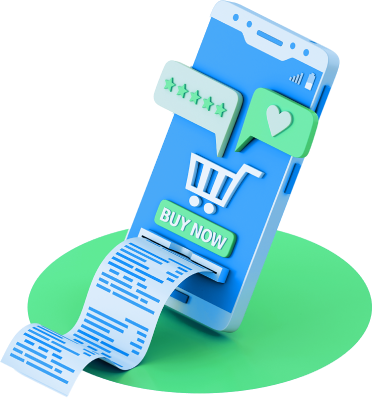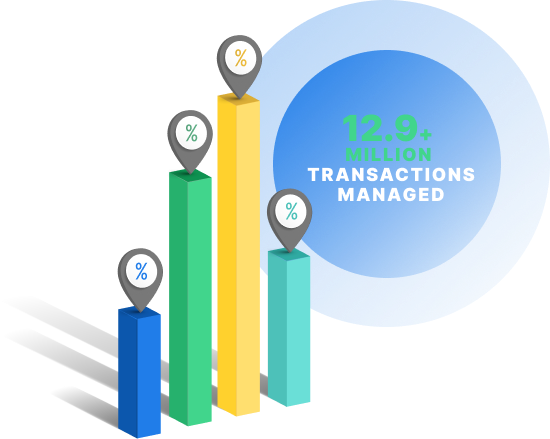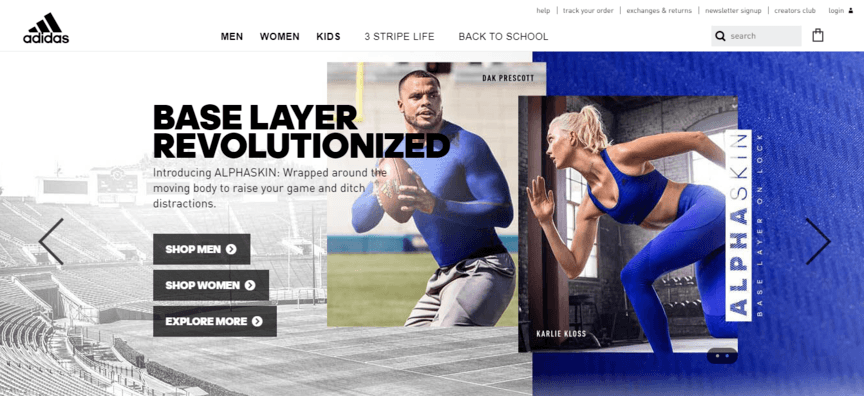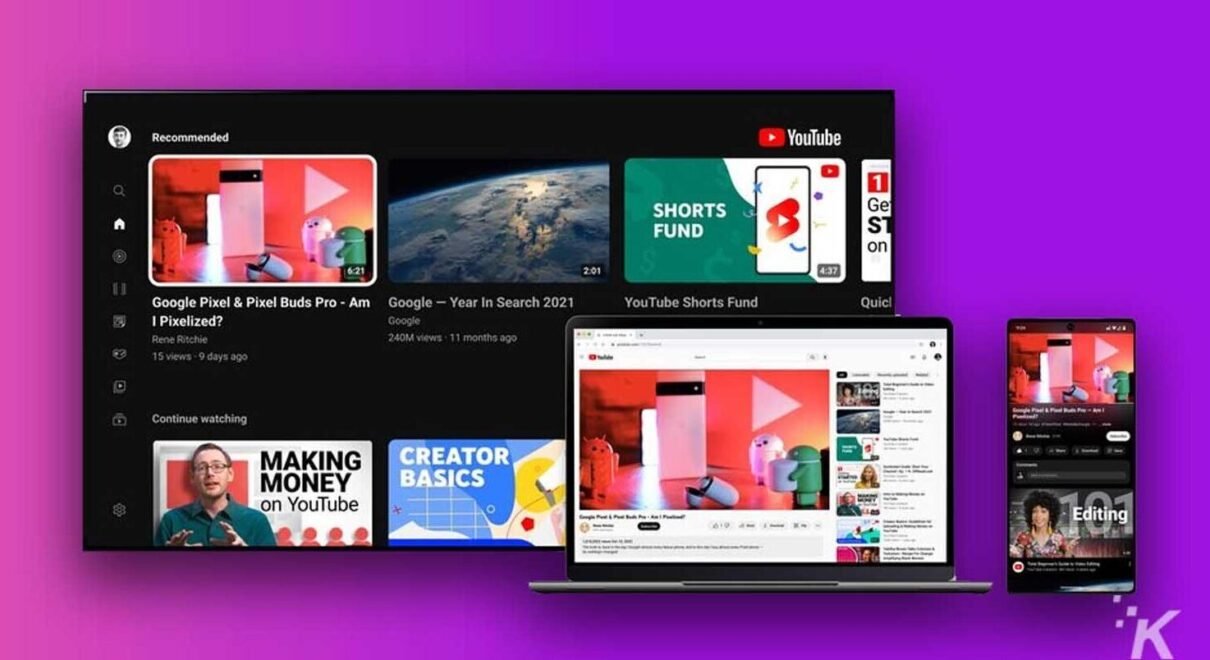Ecommerce web development is the process of building an ecommerce website. Frontend and backend development for ecommerce sites include checkout systems, payment processing, site security, and more. Keep reading to more about ecommerce web development’s meaning!
More than 2.14 billion people make purchases online. With numbers like this, developing an ecommerce website can help you turn the advantages of online shopping into a revenue-driving solution for your business.
With as many as 24 million ecommerce websites today, your web development is essential to ensure your site stands out from competitors.
But what is ecommerce web development, and how can you develop a successful ecommerce website that’ll drive results for your business? We’ll cover that and more in this article, so keep reading to find out!

What is ecommerce web development?
Ecommerce web development is the process of building and designing an ecommerce website where consumers can purchase products online. Because ecommerce websites are so popular with consumers, developing an ecommerce website can help you generate more conversions and revenue for your business.
Why is ecommerce web development important?
Ecommerce web development that helps users easily navigate pages, find their favorite products, and seamlessly make purchases is essential for laying the foundations of your business’s success.
Here are a few more reasons why ecommerce web development is essential for your business:
- It sets the first impression: Your website is likely the first interaction a potential customer will have with your brand. Effective web development can give visitors a good impression of your brand to keep them on your site for longer.
- It helps user experience: Developing a good user experience for your visitors is essential to help you convert leads and increase your sales. Excellent web development practices can ensure your website runs flawlessly so users can easily navigate and find what they’re looking for.
- It can aid your SEO strategy: Web development is crucial for any SEO campaign. Things like page speed, coding, URLs, and hyperlinks can all have an impact on how high your site will rank on a search engine’s results page.
- It can help you stand out from the competition: You’ll want your website to stand out from your competitors, and web development is a great way to do it. Your ecommerce web development can help you build a new, updated, and high-quality website that will outrank your competitors and drive leads and traffic to your website.
Ultimately, ecommerce web development is a tool that can help you boost your business’ success. Ecommerce web development can help you build a website that will generate leads, increase traffic, and boost sales and revenue for your business.
The 6-step ecommerce web development process
Now that you know the answer to the question, “What is ecommerce web development?” let’s dive into how you can begin developing your ecommerce website.
Here’s your step-by-step ecommerce web development process to help you drive the most revenue with your website:
1. Start with a plan
The first step in any web development process is to start with a plan. Before you begin designing the layout of your website, you will want to have a strategy and goals of what you would like your website to accomplish.
You might want to think about:
- Your customer service goals
- How you wish to display and sell your products
- Your business goals, such as increasing sales and brand recognition
Your business goals and strategies will determine the structure and layout of your site, so planning these out in advance is essential.
2. Choose a platform and domain
Once you have your plan in mind, the next step is to choose a platform and domain for your ecommerce website. You’ll want to select your domain name, or site URL, carefully. Your domain name should be short, representative of your brand, and memorable.
In most cases, your company’s name is usually the best option. You can also pick from several domain tools, such as Dot-o-mator, which can help you choose a domain name by making suggestions based on keywords you enter.
You can also decide to use an ecommerce platform to help you build and develop your website. Ecommerce platforms can help you create your site from scratch and offer customizable options to ensure your website looks and feels like a representation of your brand.
A few options you can choose from are Wix, Squarespace, and Shopify.
3. Create the layout
Now that you’ve chosen your domain main and ecommerce platform, it’s time to start designing the layout of your website. You can start by creating a sitemap or simple outline of the pages on your website.
You’ll want to consider what pages and content you would like to include, such as:
- Product listings
- Customer reviews
- Checkout process
- Videos
- Customer wish lists
Once you’ve created your sitemap, the next two steps of the ecommerce web development process will be a bit easier.
4. Code your website
Perhaps the most essential element of your web development is your web coding or back-end development. Coding ensures your website functions as it should. You can decide whether to code your website manually or use a content management system (CMS).
Many of the coding and back-end development elements will already be in place with a CMS, so you won’t need to interact much with code. If you decide to code manually, you can use HTML, JavaScript, and CSS to help you successfully build your ecommerce website.
5. Optimize your design
With your back-end development complete, you can now focus on some of the design elements of your website or the front-end development.

Optimizing your design is all about creating the look and feel of your website and customizing the pages that your customers will see and interact with.
You’ll want to consider which colors and themes you would like to use, adding in some images and videos and whether your customers will be able to navigate through your website easily, and more.
Your web design is often the first time a consumer interacts with your brand, so you want to ensure you give them an excellent first impression so they will stay on your site until they are ready to make a purchase.
6. Get ready to launch
Once you’ve completed the above steps, your website will be ready to launch and start attracting new customers and increasing your sales.
Before you officially launch your website, though, you might want to test and ensure that everything on your website is working as it should, especially functions like making a purchase.
If everything works as intended, then it’s time to launch your website and start attracting customers and driving sales. This is an excellent time to begin a marketing strategy to promote your website and products so you can drive revenue.
To ensure customers find your new website, you can:
- Use pay-per-click (PPC) advertisements: PPC ads are an excellent way to start generating web traffic. With PPC ads, you can bid on keywords, so that each time a consumer searches for phrases related to your business, your website will appear at the top of the search results.
- Implement an SEO strategy: Implementing an SEO strategy is one of the best ways to help your website rank higher in the search results and outrank competitors. And because SEO can take three to six months to start driving results, it’s best to start your strategy as soon as possible.
- Promote your website on social media: Social media is a great tool to advertise and promote your business online. You can consider creating a social media page for your business and encourage your followers to check out your website online and advertise your products.
Once you’ve launched your website, it’s essential to promote it so that you can drive traffic and revenue for your business.
3-point ecommerce web development checklist
Are you wondering how you can ensure your website will drive revenue for your business? Check out this revenue-driving ecommerce web development checklist to ensure your website will increase leads and sales:
1. Did you factor in user experience?
Incorporating user experience into your web design and development is essential for enabling customers to quickly find the information they want, get in touch with your business, and ultimately convert into paying customers.
And when nearly 89% of consumers shop with a competitor after a poor user experience, this isn’t an element you want to miss.
To create the best user experience, you will want to ensure:
- You communicate the value of your products and services
- You address the needs of your customers
- Your website navigation is simple and easy to follow, with minimal clicks needed to find a page
- Your web design attracts and entices customers to click and stay on your website
By keeping these elements in mind when developing your website, you can ensure your customers have the best user experience on your site, leading to more leads and conversions for your business.
2. Did you plan for SEO?
SEO can help your website rank higher on the search results pages so potential clients can find your products when searching for relevant keywords.
When developing your ecommerce website, there are a few things you can do to optimize your site for search engines, such as:
- Ensuring your website is mobile-friendly
- Using descriptive URLs, so search engines better understand your pages
- Ensuring your pages load quickly
- Incorporating keywords
- And more
By factoring these SEO elements into your web development process, you can help your website outrank your competitors on the search engine results pages.
You can also help consumers find your products and services online, which can ultimately increase your sales and revenue.
3. Did you use digital marketing strategies to promote your website and business?
Developing effective digital marketing strategies is essential for ensuring the long-term success of your ecommerce website and business.
Once your website is up and running, you’ll want to consider using some of these digital marketing strategies to boost the success of your business further:
- Pay-per-click (PPC) advertising
- Content marketing
- Email marketing
- Social media marketing
- And more
Implementing revenue-driving marketing strategies is one of the best ways to increase your visibility online and boost the success of your business.
Partnering with a digital marketing agency like can help you develop, implement, and track successful marketing campaigns that drive results.
Time to Level Up Your Sales
Our long list of services helps you grow every aspect of your business with marketing strategies that are proven to increase bottom-line metrics like revenue and conversions.
In the past 5 years, we’ve managed more than 12.9 MILLIONtransactions across our client base.

Send Me a Proposal
FAQs about ecommerce web development
Learn more about ecommerce web development with these FAQs:
What are ecommerce websites?
An ecommerce website is a website that allows you to buy or sell products and services online.
Ecommerce websites are perfect for enabling consumers to research, browse, and purchase their favorite products from the comfort of their homes with just a few clicks from their computer, tablet, or mobile device.
What are the types of ecommerce websites?
There are two types of ecommerce websites:
1. Vendor-specific websites
Vendor-specific websites are the most common type of ecommerce website.

They are built for and run by one individual business who is the only seller on the site. Creating and managing your own website can enable you to have your own branded space to market and promote your products and services.
As a bonus, you can also further promote and optimize your website through digital marketing strategies, such as search engine optimization (SEO), to help you rank high in the search results and boost the success of your website and business.
2. Multi-vendor online marketplaces
Multi-vendor online marketplaces feature products and services from numerous sellers. Amazon, eBay, and Alibaba are popular examples of multi-vendor online marketplaces.

An individual website owner will still build and manage the website and sometimes sell products on it, but third-party sellers will offer their products and services through the site and sometimes create their own profiles and pages.
What does an ecommerce web developer do?
An ecommerce web developer’s primary responsibility is to make the design prototype of a website come to life and overall function as a website. In other words, web development involves making the design of a website function as it should.
For example, a web developer would ensure that any navigational buttons, contact forms, calls to action (CTAs) buttons, and hyperlinks function as they should.





